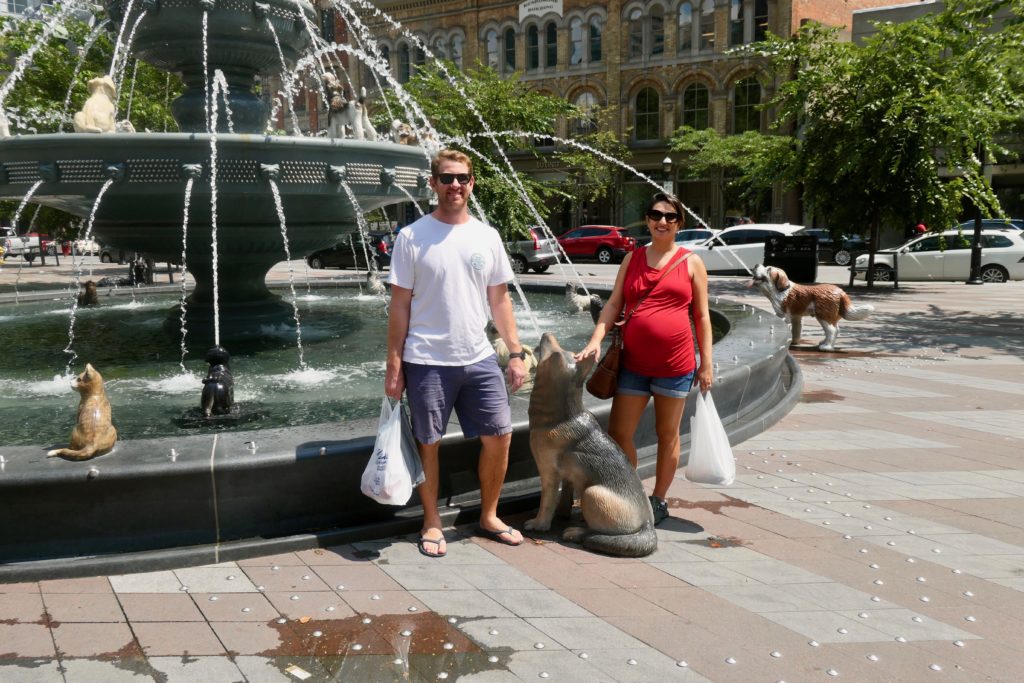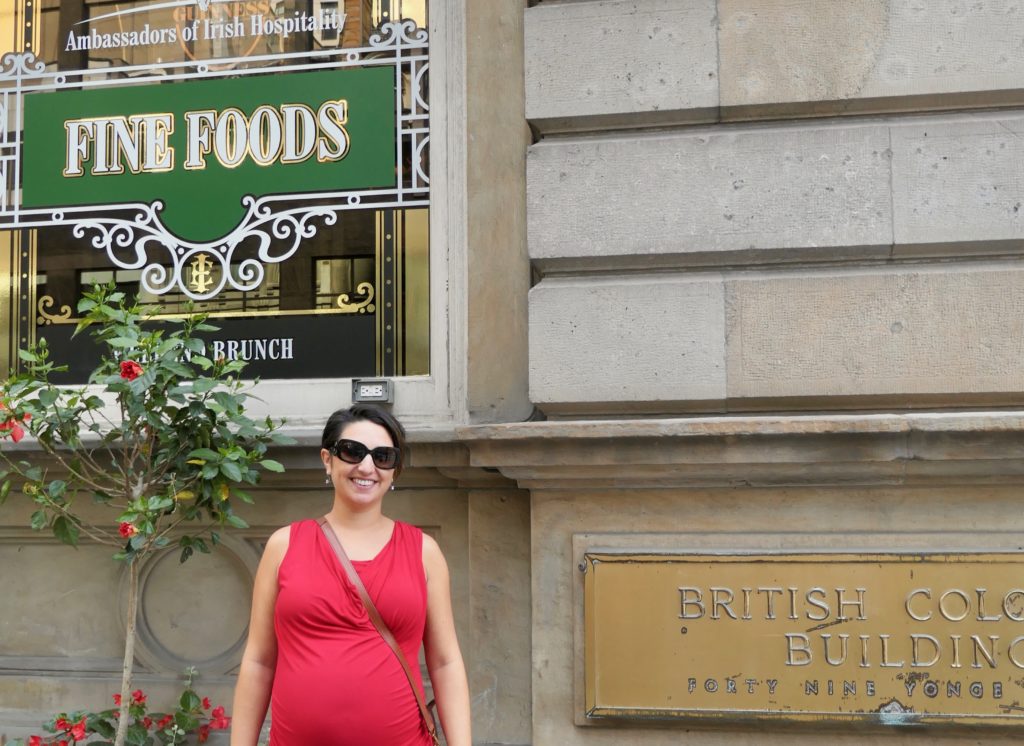We had found that food tours were a great way to learn about a town and find the good places to eat so, having convinced Andrew that it was a good idea, selected the Culinary Adventure Tour of St. Lawrence Market. Christine had been told that the 200 year-old markets were a must-visit for anyone coming to Toronto.
We linked up with our guide, Leo, and the other four members of our party and headed for our first stop – coffee at Balzac’s Coffee Roasters. Named after Honoré de Balzac, a prolific and celebrated 19th century French novelist, whose prodigious output was famously fueled by copious cups of strong, black coffee consumed throughout the night, this popular café is situated in a beautifully restored heritage building with it’s large patio facing the St. Lawrence Market. 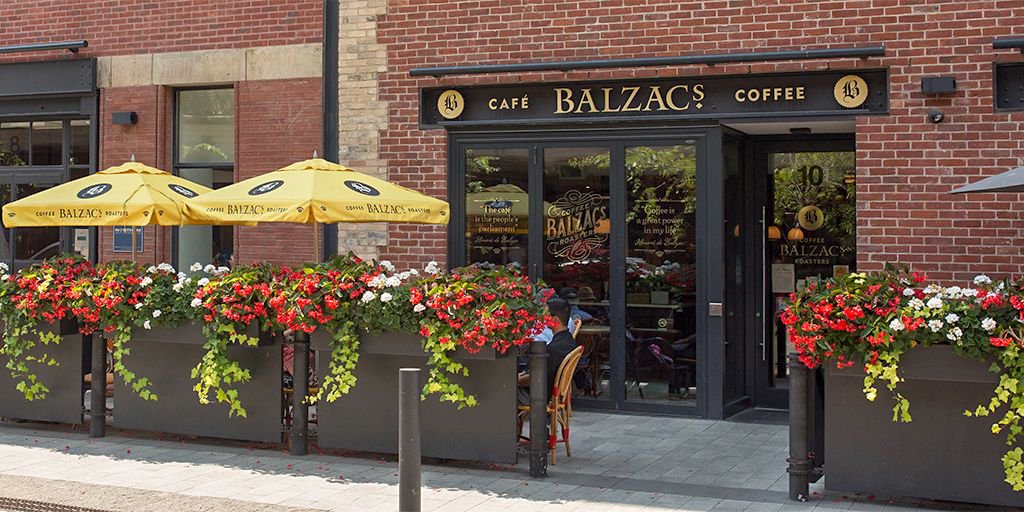
After we had indulged in some very good coffee (and Chia Latte) we gathered for a talk about the history of the Market and the surrounding area known as Downtown Toronto. The area formed part of the original city of York, and was later known as Old Toronto. In 1904 the Great Toronto Fire destroyed most of it and after the reconstruction it was amalgamated with other municipalities to become the modern day city of Toronto. We had a walk through the area past the Cathedral and some of the other historic buildings that the Fire had spared; including the flat iron building, which had a fascinating history.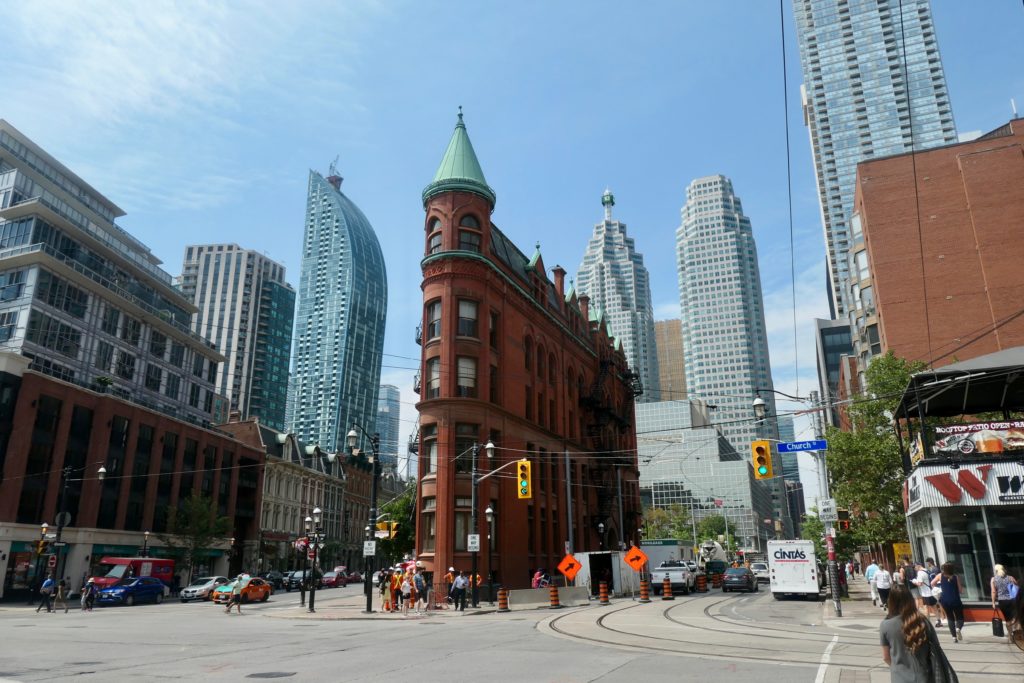 Originally the Gooderham Building it was built to house the Gooderham & Worts Distillery and is wedged between Front Street and Wellington Street where they join up to form a triangular intersection. The building is the focal point of one of Toronto’s most iconic vistas: looking west down Front Street towards the building’s prominent rounded corner, framed on the sides by the heritage commercial blocks along Front Street, and with the skyscrapers of the Financial District towering in the background.
Originally the Gooderham Building it was built to house the Gooderham & Worts Distillery and is wedged between Front Street and Wellington Street where they join up to form a triangular intersection. The building is the focal point of one of Toronto’s most iconic vistas: looking west down Front Street towards the building’s prominent rounded corner, framed on the sides by the heritage commercial blocks along Front Street, and with the skyscrapers of the Financial District towering in the background. 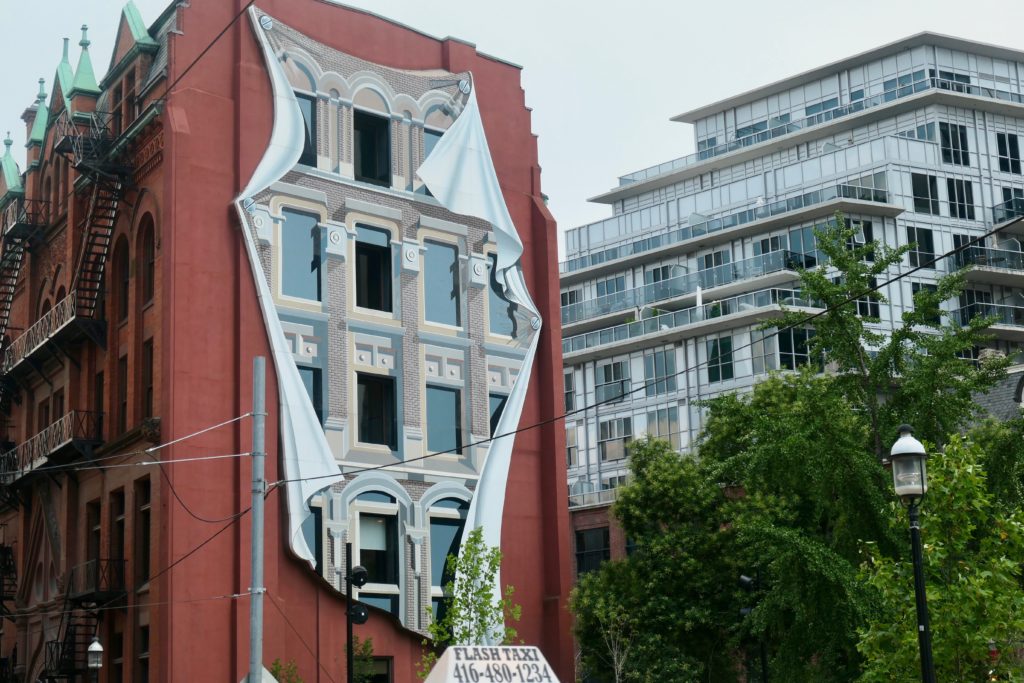
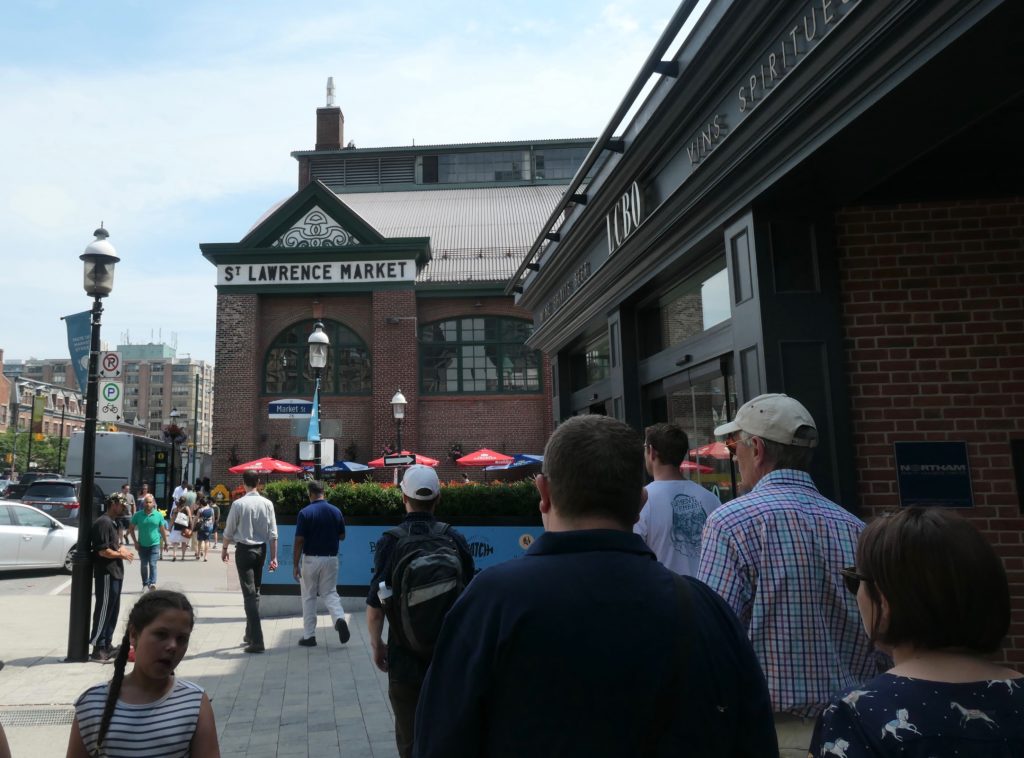
St Lawrence Market North has hosted weekly farmer’s markets and antique markets since 1803. It is currently being redeveloped and we went across to have a look at the plans and photos of the radically different building being constructed. In the meantime the farmer’s and antique markets are being held behind St Lawrence Market South.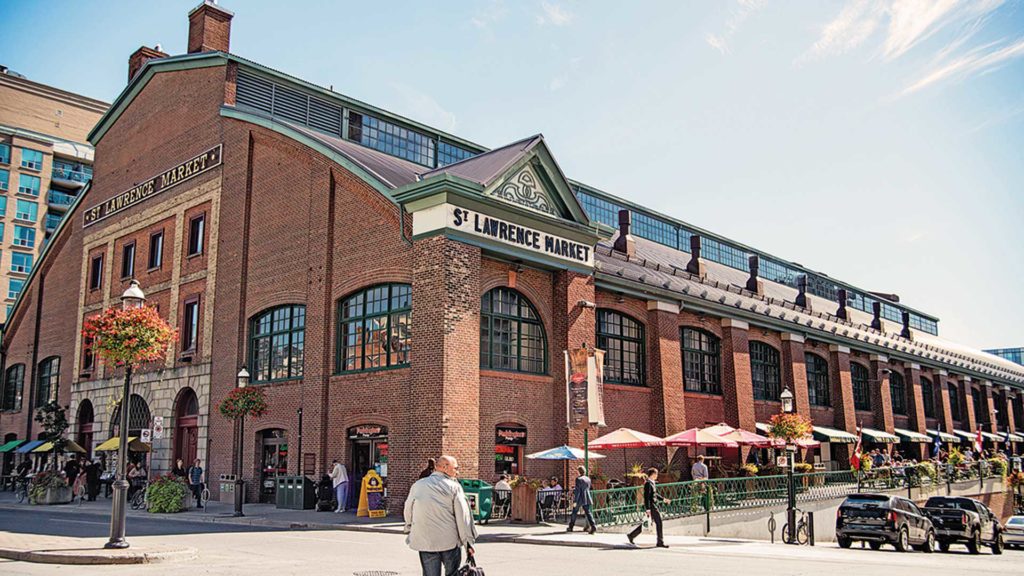
The South building was originally the City Hall and also housed the police station and jail cells. The old council chamber is all that remains of the original city hall and is located on the gallery’s second floor.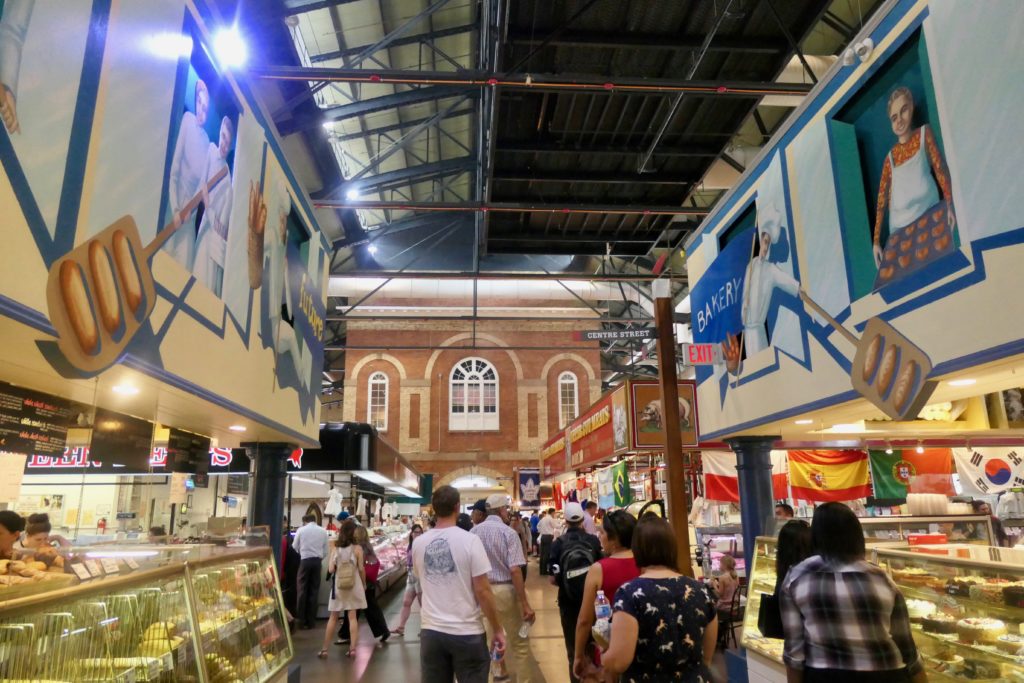
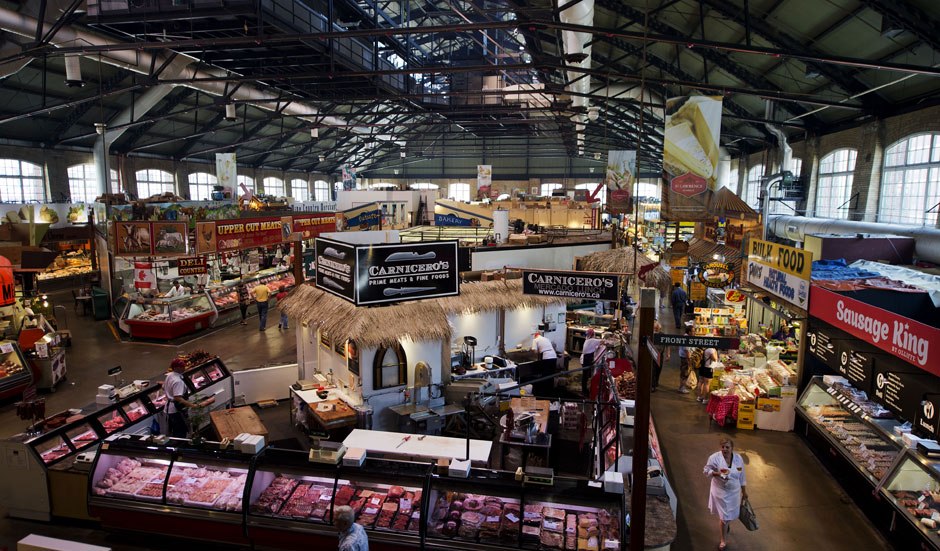 It’s no wonder that National Geographic voted the market the world’s best food market.
It’s no wonder that National Geographic voted the market the world’s best food market.
Our first stop in this iconic market was to the Carousel Bakery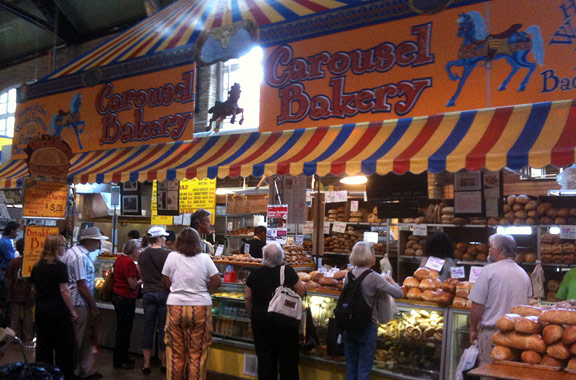 to sample an iconic dish, Toronto’s Peameal Bacon sandwich, which is almost obligatory to eat if you visit Toronto.
to sample an iconic dish, Toronto’s Peameal Bacon sandwich, which is almost obligatory to eat if you visit Toronto.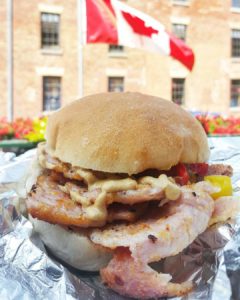 This was followed by a visit to Scheffler’s Delicatessen & Cheese to try their cheeses and charcuterie board. , Mike’s Seafood was very popular, particularly the Oyster Bar
This was followed by a visit to Scheffler’s Delicatessen & Cheese to try their cheeses and charcuterie board. , Mike’s Seafood was very popular, particularly the Oyster Bar 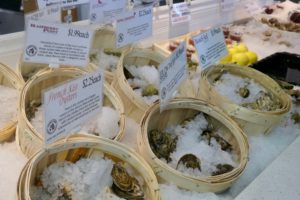 and the samples of hot and cold smoked salmon.
and the samples of hot and cold smoked salmon.  We called in at European Delight to try their Pierogi, (little dumplings filled with a sweet or savour filling)
We called in at European Delight to try their Pierogi, (little dumplings filled with a sweet or savour filling) 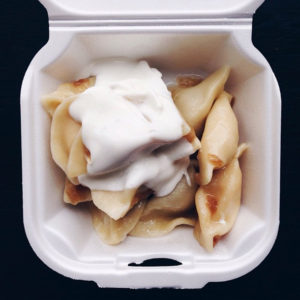 and snacked on fruit and berries from the various fruit stalls before ending up at Churrasco of St Lawrence to try another of Toronto’s iconic dishes, Portuguese Custard Tarts.
and snacked on fruit and berries from the various fruit stalls before ending up at Churrasco of St Lawrence to try another of Toronto’s iconic dishes, Portuguese Custard Tarts. 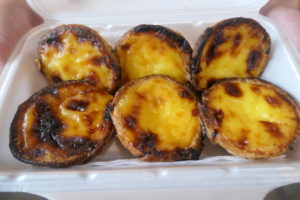 As we went Leo told us the history of the people who had, in many cases, run these stalls for generations.
As we went Leo told us the history of the people who had, in many cases, run these stalls for generations.
After Leo had departed we explored the Markets on our own. 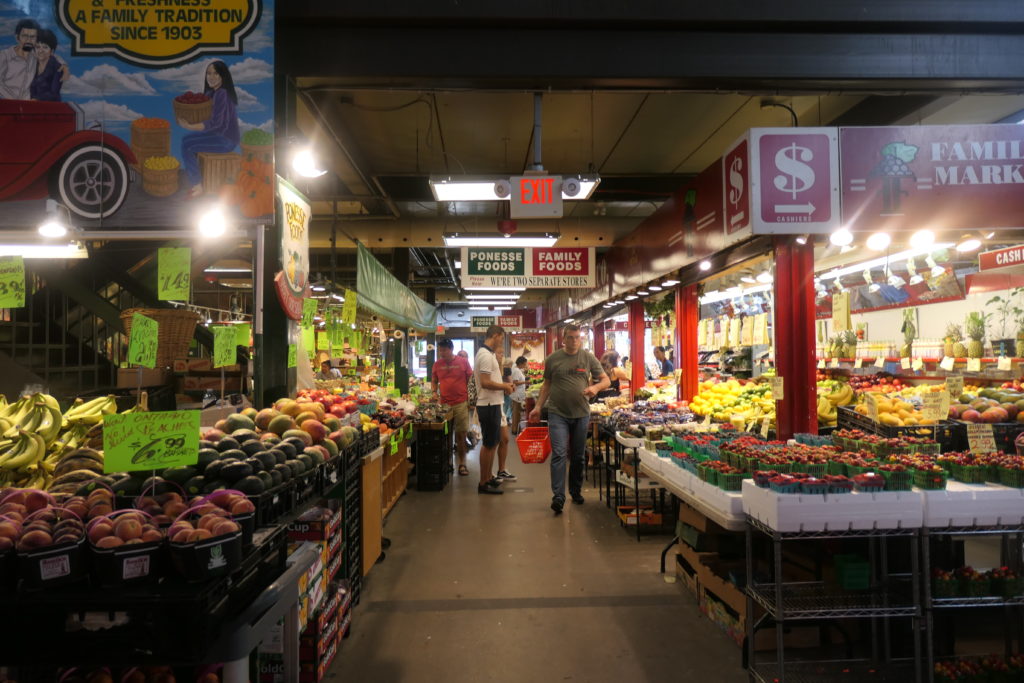 I was keen to get some samphire or sea asparagus that I had spotted earlier whilst the boys headed for the meat section to buy a large steak for dinner that night.
I was keen to get some samphire or sea asparagus that I had spotted earlier whilst the boys headed for the meat section to buy a large steak for dinner that night. 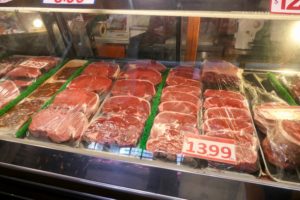 Christine and I split up in search of Cinnamon and Raisin Bagels but all the bakeries were sold out – we had been pipped at the post by Edgar who arrived with a bag full – he had bought the last ones in the Market!
Christine and I split up in search of Cinnamon and Raisin Bagels but all the bakeries were sold out – we had been pipped at the post by Edgar who arrived with a bag full – he had bought the last ones in the Market!
We left the Market and headed for the train station detouring past Berczy Park. The distinctive feature of the park is a large, two-tier fountain with life-size cast-iron statues of 27 dogs and a cat.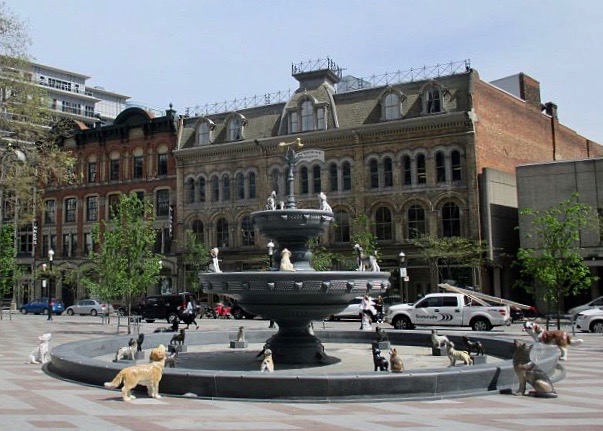 The dogs are all looking up towards a large bone perched on the fountain’s peak. The cat is looking north at statues of two small birds perched on the arm of a lamppost about 3 metres away from the fountain. Each of the dog statues contributes to the fountain function by sprouting water upwards from their mouths. The fountain also includes a ground level trough to provide drinking water for real dogs!
The dogs are all looking up towards a large bone perched on the fountain’s peak. The cat is looking north at statues of two small birds perched on the arm of a lamppost about 3 metres away from the fountain. Each of the dog statues contributes to the fountain function by sprouting water upwards from their mouths. The fountain also includes a ground level trough to provide drinking water for real dogs!